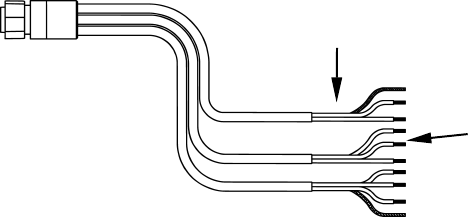
30
The Power/Data cable for this unit.
Caution
All of the wires in the power/data cable have bare ends for eas-
ier installation. The bare ends on any unused wires could cause
an electrical short if left exposed. To prevent this, you should
cover the individual wire ends – either by capping them with
wire nuts or wrapping them with electrical tape. (You should cut
off the bare wire before taping off the ends.)
Powering a NMEA 2000 Buss
(NMEA 2000 Power cable)
A NMEA 2000 buss must be connected to a 12-volt DC power source to
operate. If you have a pre-existing NMEA 2000 installation, it may al-
ready be connected to another power source. If your NMEA 2000 buss is
already powered, you can ignore the NMEA 2000 Power cable. Never
attach two power sources to a single NMEA 2000 buss.
If you need to power a NMEA 2000 buss, attach the NMEA 2000 Power
cable to an accessory power switch. The cable's red wire should be at-
tached (with the provided 3-amp fuse) to the positive terminal and the
cable's black and shield wires should both be attached to the negative
terminal.
You can attach the NMEA 2000 power cable directly to the boat's bat-
tery, but you must use the fuse and install an on-off switch so
you can shut off power to the network. If a NMEA 2000 power ca-
ble is connected directly to a battery, the NMEA 2000 network will con-
tinuously draw power and drain the battery, even though the boat, your
unit and other NMEA 2000 devices are turned off.
Caution:
Never connect a NMEA 2000 power cable to an un-switched
power supply. Failure to use a power switch will allow the
NMEA 2000 network to drain the boat's battery when the system
is not in use! When you are not using the network, you should al-
ways shut the power off.
To unit
Data Cable wires: blue,
yellow, orange and shield
Power Supply wires:
red, black and white
NMEA 2000 Power wires:
red, black and shield


















